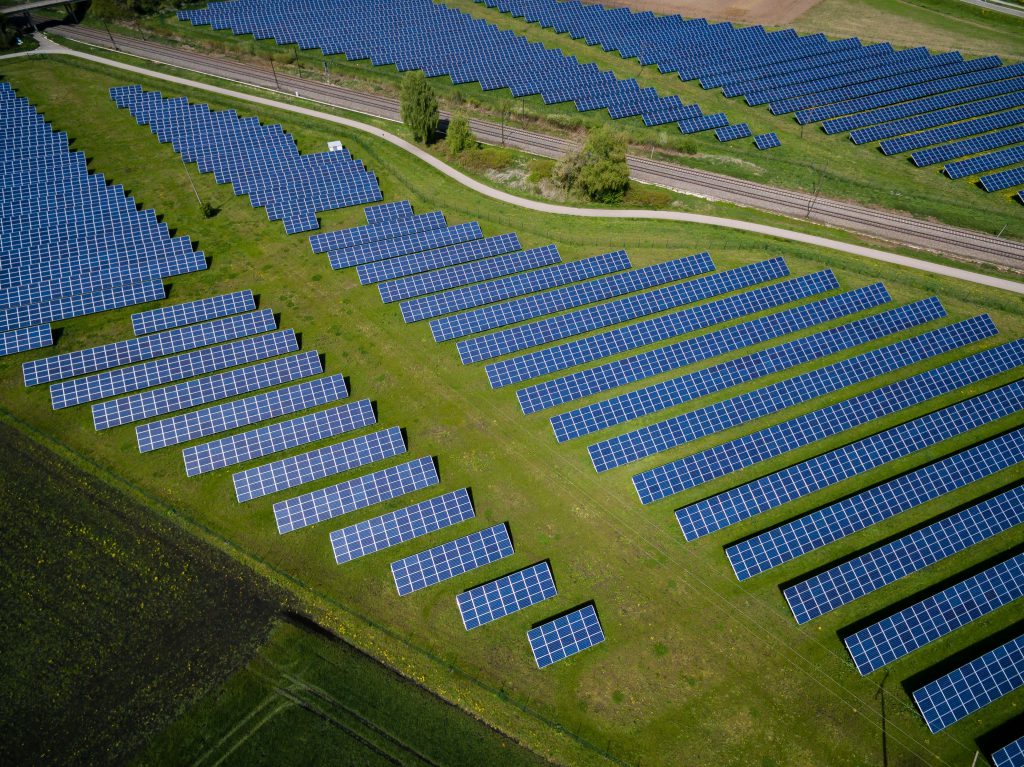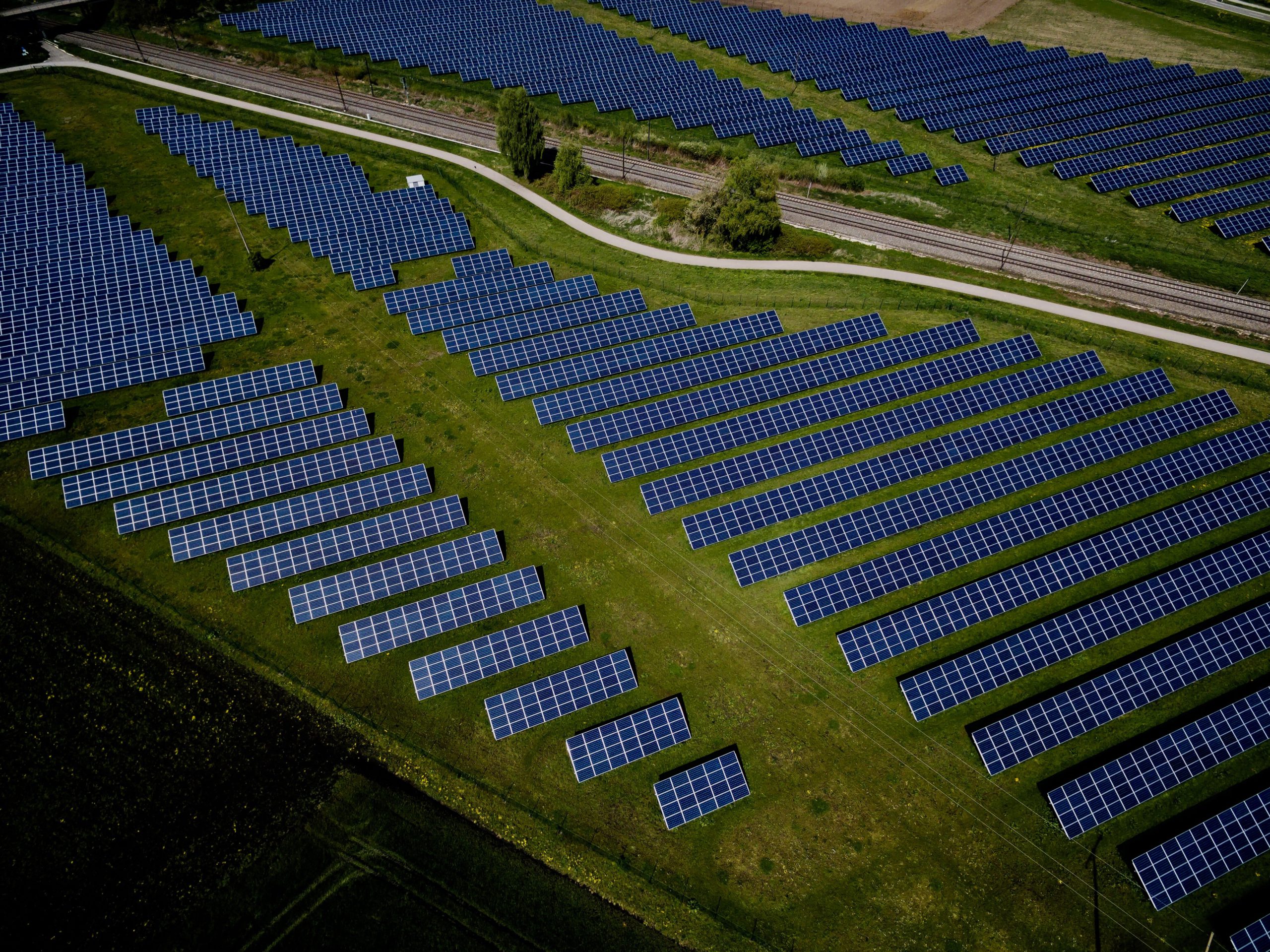I embarked on a journey to understand the impact of community solar on farmlands.
Today, I’m breaking down all my unbiased learnings for you.
Okay, let’s address the 13,000-pound elephant in the community solar industry:

I’ll be real: this isn’t the first time that someone has brought this up.
It’s a fair point, and it made me curious to learn more, so I embarked on a journey to understand the impact of community solar on farmlands and answer my burning questions:
- Why are community solar farms built on farmlands?
- Could community solar farms be built in cities instead?
- Will community solar affect our food supply?
- Why do farmers use their land for community solar?
- How are average people, like you and I, impacted by community solar gardens built on farmlands?
- What considerations are there when using farmlands for community solar projects?
After speaking with experts from all over the globe and reading research papers from prestigious organizations, I was blown away by the findings (and you will be too).
Today, I’m breaking down all my unbiased learnings for you.
Table of Contents
Why are community solar farms built on farmlands?
While community solar farms can be built anywhere, the ideal terrain for solar farms is flat, dry, unshaded, clean from obstacles, and close to power lines. As a result, farmlands are favored by the companies that build solar farms, otherwise known as solar developers.
Think about it: most farmlands are flat, there is little shade to ensure that crops get the maximum amount of sunlight, there are no obstacles preventing crops from growing or tractors from operating, and there are power lines to feed energy to the farms.
It checks all the boxes for a solar developer.
From a financial perspective, farmlands make more sense for the developers since the upfront costs are lower. This is because there is no need to even out the land or cut down any trees.
Lowered construction costs allow the developers to offer higher savings to the subscriber, making their project more attractive compared to others.
Almost always, the community solar garden with the greatest savings attracts the highest number of customers.

Will community solar affect our food supply?
According to Preston Ochsner, CEO of Pure Energy, about 60% of the community solar projects he’s seen have been built on farmlands.
Unsurprisingly, customers regularly wonder if community solar being built on farmlands affect food production.
After some digging, I found that…community solar being built on farmlands is not even in the top 100 list of threats to our food production.
How so?
Data from the National Renewable Energy Laboratory shows that it only takes 0.6% of the country’s land to provide electricity to the entire population in the US.
As the World Bank’s data shows, there is no shortage of agricultural farmlands in the US since 44% of US land (or 1,012,000,000 acres) is agricultural land.
Even if we used all the available agricultural land in the US for community solar (don’t worry, people are not going to do that), 92% of the farmlands would still be left untouched. Using farmlands for community solar projects is not a threat to our food supply.
Then what is the biggest threat to our food supply?
Believe it or not, it’s food waste!

About 40% of the food we produce is thrown away, while one in every eight Americans does not have access to a steady food supply–that’s shocking.
Food waste is also a significant contributor to climate change. If food waste were a country, it would the third largest emitter of greenhouse gases.
But don’t worry, even though it wouldn’t significantly change our food supply, we are still not going to use all the available farmlands for solar panels! In fact, most of the ‘so-called’ farmlands used for community solar projects are built on lousy land, or in other words, un-arable land. Therefore, the amount of prime-agricultural farmlands affected by solar panels is minimal.
Why would farmers use their land for community solar?
How do farmers benefit from using their land for community solar?
I am glad you asked 🙂
From a financial perspective, it gives farmers a good source of revenue. In fact, the income per acre of community solar projects is much higher than conventional crops, such as corn or hay. As farmers grow older and look to retire, community solar allows farmers to receive a steady stream of income over a period of time; unlike crop performance, signing a lease is reliable.
“As farmers look to retirement, they can have a source of income that is not dependent on one or two people inside a household.”
Preston Ochsner, CEO of Pure Energy
From an agricultural perspective, not all land is always fertile, and even land that used to be fertile will be left fallow as a strategic move to increase crop yield in the future. Community solar is an effective way to protect the farmland, and still make revenue off an area that would have otherwise been unused.
Lastly, using the land for community solar allows farmers to make a much more significant impact on the world:
“Farmers feel connected to the land, and they want to do something good for the environment. Regardless whether they care about the ozone, the environment, or the next generation, they can feel pride by doing something with a much larger impact.”
Scott Starr, SPV at Dynamic Energy
How are average people, like you and I, impacted by community solar gardens built on farmland?
Because developers can offer higher savings due to lower construction costs, customers, like you and I, end up saving more.
For example, the difference between 5% and 10% savings on a community solar project is astounding.
Assuming your monthly electricity bill is around the US average, which is $112, you’ll end up saving $672 after ten years with a community solar project that offers 5% savings. But if you can subscribe to a community solar project that offers 10% savings, you’ll end up saving $1,344 in 10 years…
Which one would you pick? 10%? Me too.

Related
Having solar farms in rural areas also increases the accessibility of affordable, clean energy to those who live nearby. If solar energy were to be produced in a city community solar farm, it would be much more expensive than burning fossil fuels.
On the bright side, local clean energy benefits suburban communities near the solar farms and allows them to see the benefits of renewable energy.
For example, Meerwada is a remote village in India that was, up until recently, unelectrified. The arrival of solar power changed everyone’s lives – children were able to study at night, families could turn fans on during hot nights, and elders were able to see where they were walking.
Can we build community solar farms in cities?
“What about city rooftops? Why can’t they install solar panels there?” I questioned. After all, those are “flat, dry, and have plenty of sunshine.”
So I asked Scott Starr, SPV at Dynamic Energy, and he said, “Putting the same amount of solar in a city will be near impossible. Even if it were done, it would be significantly more expensive and it would only benefit the local urban area.”
Scott was right.
It would not only be a nightmare to negotiate leasing rights to the city’s rooftops, but if most of the solar panels were on top of the city skyscrapers, those living in the suburbs would be locked out of clean solar energy.
On average, 6% of the energy we produce in the US is lost in transmission. If we increase the distance between where the power is generated (i.e. solar panels in the city) and the people who benefit from it (i.e. people in the suburbs), that number will only grow.
My mind was blown away by all the moving pieces.

What considerations are there when using farmlands for community solar projects?
1. Choosing the right plot of land
Not all farmlands are equal, and developers should pay special consideration when picking a specific plot of farmland for community solar panels. As we’ve seen earlier, 44% of the US is covered by farmlands, which means that there are usually plenty of locations to choose from.
2. Ensuring local policies encourage responsible solar development
Aside from understanding that developers have plenty of choices when building community solar projects on farmland, comprehensive solar policies can also encourage the responsible development of community solar projects on farmlands.
For example, some states, such as New York and Massachusetts, impose a tax penalty for developing community solar on land covered by special agricultural tax assessments.
California legislature encourages the development of solar farms in non-prime farmland by offering a significant tax break for landowners.
To preserve high-quality farmlands for agricultural use instead of community solar, some states grant additional tax benefits to those landowners with high-quality farmlands. New Jersey, California, and Massachusetts are among these states.
As states like Massachusetts are beginning to encourage responsible solar development by offering special incentives for community solar projects developed on landfills, contaminated land, and industrial sites, more developers will give preference to other types of flat land to build solar gardens instead of agricultural farmlands.
At Solstice, we believe in connecting communities to local solar gardens that are developed on land that meets the above standards. It makes me proud to say that we make a strong commitment to ensure that this is always the case.
Related
3. Having a proper disposal plan
“Have the developer set aside funds for disposal” says Preston Ochsner of Pure Energy. “It’s important to give back to the community.”
A proper disposal plan ensures that farmlands return to their original states after the solar panels are decommissioned.
Scott Starr, SPV at Dynamic Energy has “personal experience building a project on Amish farmland. There were requirements from the local community to return the land to its pre-existing condition after the useful life of the project, estimated at 35+ years. The racking system for the solar panels does not require any foundation, and most wires were installed above ground, so it’s a very simple removal to return the land to its original state.”
Since most of the materials used to build solar panels are recyclable, a comprehensive disposal plan will ensure that the components end up being reused.

Takeaways
When properly executed, community solar farms that are built on farmlands can benefit the developers, landowners, and consumers significantly.
Do you agree? Should community solar farms be built on farmlands? I’d love to hear your opinion.
Comment below to let me know.





I didn't know about most of this before and I think this is great
As you point out, not all farmland is of equally productive quality. Only 8% of the worlds soils are of prime, most productive, quality and much of this land has already been developed. With world population growth estimates, much more food production will be essential in the near term. Without question, responsible planning for a future that provides both greener energy and food security calls for siting new energy development first and foremost on already degraded land and soils of low productivity. Access to adequate fresh water will be increasingly scare and important and farmland with such access should be given even higher priority for conservation. Adequate requirements for siting are essential. The cheapest route to a green energy future, although sadly incentivized and too frequently chosen by those interested in making a quick profit over following best practices, will lead to unfortunate and unnecessary consequences. Let’s do it right while we have the chance.
With my small non-profit, I do a lot of promoting the idea of going solar, community solar, etc locally. What many in the solar industry still are not doing (and this is reflected in the article by the lack of mention) is the co-location opportunities between Ag and Solar sometimes referred to as Agrovoltaics. There is work being done by NREL, Univ of Massachusetts and more. Oregon State University recently released a very encouraging study on the issue showing benefits to both Ag and Solar production on the same acreage. (https://today.oregonstate.edu/news/solar-arrays-could-be-used-resources-plant-productivity-study-shows) Pollinator-Friendly Solar Arrays have been getting some (not enough) emphasis through work done out of Minnesota with Fresh Energy https://fresh-energy.org/beeslovesolar/ There is some great work also being done on Ag-Solar co-location in Europe. In my view, the solar industry and specifically those doing community solar and other solar installations in agricultural areas MUST embrace Ag-Solar co-location, at a minimum meaning pollinator friendly habitat that supports surrounding crop fields. It's not only good practice, it is good marketing and can help address NIMBY resistance and concerns. https://pv-magazine-usa.com/2019/08/03/solar-and-pollinators-photo-essay/